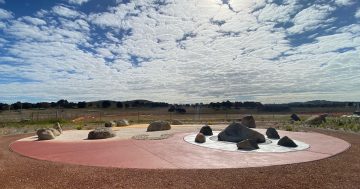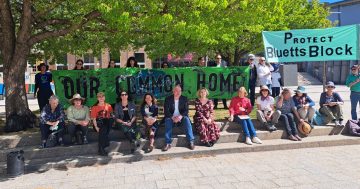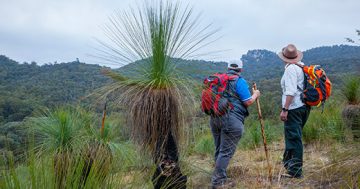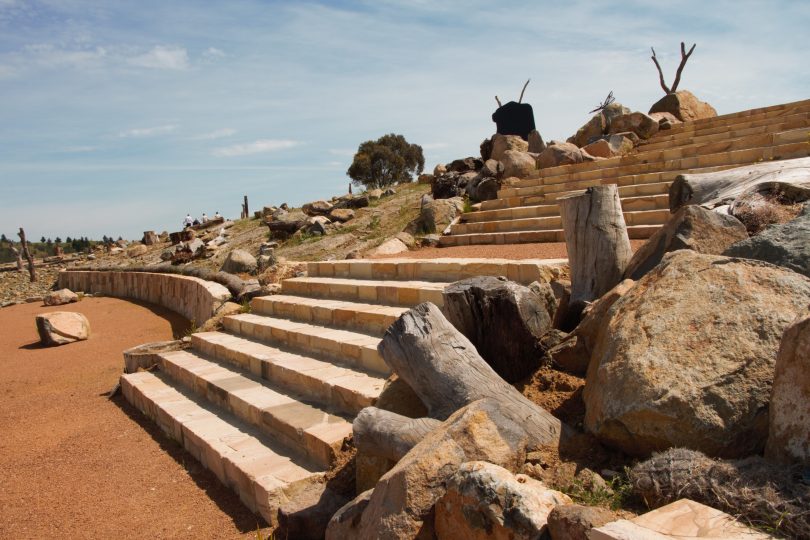
Namarag nature reserve in Molonglo officially opened on Wednesday, 3 November, 2021. Photo: Max O’Driscoll.
Namarag nature reserve in Molonglo, north of Denman Prospect, officially opened on Wednesday, 3 November, and the ACT Government hopes it sets a new benchmark for nature reserves in the Territory.
Mary Mudford, proud Ngunnawal woman and assistant director of traditional custodian engagement with the ACT Environment, Planning and Sustainable Development Directorate, described the opening as a source of great pride for the Ngunnawal community, having witnessed Namarag’s transformation from start to finish.
“It’s a very special feeling,” she said.
“For too long our First Nations people have been lumped together under generic terms of ‘Indigenous’ and ‘Aboriginal’, and being able to have the recognition for our individual nations is incredibly important.
“This project demonstrates that we’re able to be recognised as the people of this country.”
Ms Mudford said the collaboration between the ACT Government and the Ngunnawal people was the first of its kind, and she is hopeful this will be continued throughout further development.
“It is absolutely critical that Ngunnawal people are engaged in the future developments of the ACT,” she said.
“We’ve been here for tens of thousands of years and it’s really important that acknowledgement of our rights as traditional custodians of this country are embraced in those projects.”
Ms Mudford said the location of Namarag nature reserve is considered a special place for the Ngunnawal people as it is where their ancestors would gather, with Molonglo River once utilised as a pathway to move throughout the landscape.
??? New reserve precinct opens in #Molonglo ???????Namarag nature reserve is now open in the Molonglo River Reserve for visitors to explore. This new nature space near Whitlam and Denman Prospect will allow the community to maintain a connection to our environment.The Molonglo Valley is growing quickly, and it’s critical that we set aside places like Namarag to protect and preserve the natural heritage, ecosystems and beauty of the area.This beautiful space has new recreation areas and event terraces for visitors to use, as well as conservation habitats to protect our threatened plants and animals.The design of Namarag has been guided by the Ngunnawal community to ensure this space celebrates Ngunnawal culture and provides an opportunity to share the Ngunnawal story through cultural tourism and education programs.More than 10,000 new trees, shrubs and plants have been added to Namarag by Greening Australia, and we look forward to seeing more added by nearby residents in the years to come.Thank you to the Ngunnawal community, Greening Australia and construction company Complex Co for helping to bring this project to life for all Canberrans to enjoy.Learn more about Namarag and other nature reserves at environment.act.gov.au
Posted by Chris Steel MLA on Tuesday, November 2, 2021
ACT Environment, Heritage and Water executive group manager Ian Walker said the Namarag project is part of the ACT Government’s extensive consultation with the Ngunnawal community.
“This is an exemplar of what we want to see happen in the future,” he said.
“The whole design was built around Ngunnawal culture, Ngunnawal community and explicitly involving Ngunnawal people.”
Mr Walker spoke of Namarag’s proximity to Denman Prospect, and walking track access points into the reserve. He suggested that not only does it strengthen the connection to Ngunnawal country, but it also improves the aesthetic appeal of the area and helps protect key environmental values.
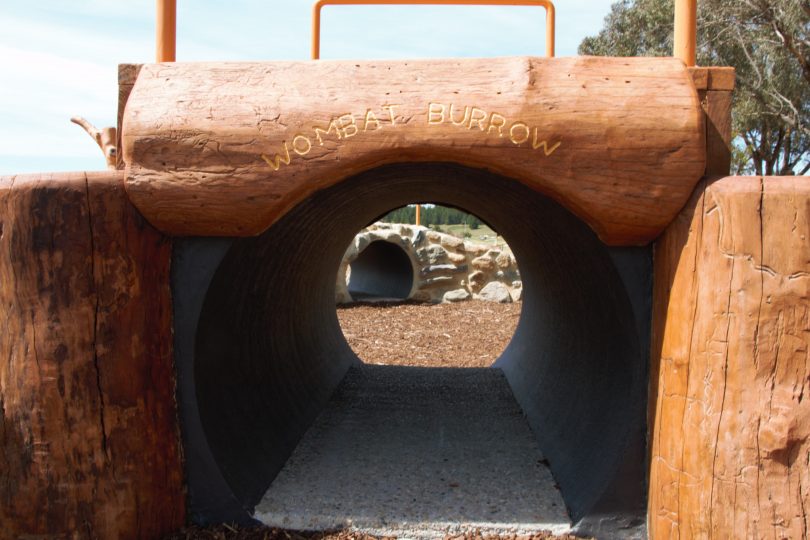
The ‘Wombat Burrow’ at Bidjiwang Nature Play Space. Photo: Max O’Driscoll.
ACT Minister for Planning and Land Management Mick Gentleman described Namarag as an effort to get the Ngunnawal story across to the wider community.
“It really tells a wonderful story about Ngunnawal culture,” he said.
“It’s a great opportunity, particularly for the young people in Canberra, to come along and have a look to see how Ngunnawal people used to live on the land, and also to just enjoy our fantastic open space as part of our new nature reserve for the Molonglo Valley.”
Namarag nature reserve features more than 10,000 new trees, shrubs and plants, and more than 2000 tonnes of hardwood logs from Canberra’s urban forest.
It is also home to the new Bidjiwang Nature Play Space, which is a nature-styled playground.












